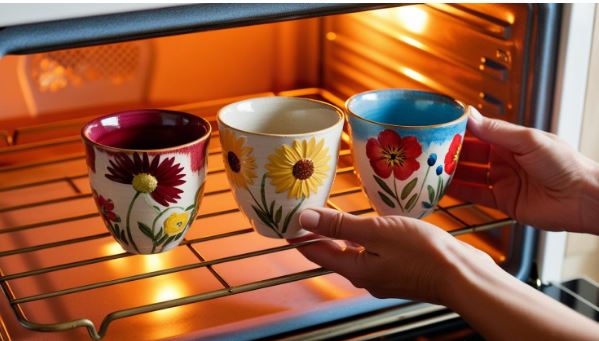
Can You Use Surfpaints on Ceramic and Heat It? Here’s How!
Ceramic art is an incredible way to create vibrant, long-lasting designs. A common question we get at Surfpaints is: Can you use Surfpaints acrylic paint pens on ceramic and heat them for a permanent finish? The answer? YES! And the results are absolutely stunning.
In this guide, we’ll show you exactly how to create, heat, and set your ceramic artwork using Surfpaints. Plus, we’ve got an inspiring customer example to shar
Step-by-Step Guide to Painting & Heating Ceramic with Surfpaints
1. Choose the Right Ceramic Surface
Opt for ceramic plates, mugs, or tiles that have a smooth, non-glazed surface for better paint adhesion. If you’re using a glossy or glazed ceramic, lightly sanding the surface can help the paint stick better.
2. Clean & Prep the Surface
Before painting, make sure your ceramic piece is clean and dry. Wipe it down with isopropyl alcohol to remove dust or oils that could prevent the paint from adhering properly.
3. Create Your Artwork
Using Surfpaints acrylic paint pens, apply your design with smooth, even strokes. Our fine-tip pens work great for details, while our larger nibs are perfect for bold designs. Let each layer dry before adding another to prevent smudging

4. Let the Paint Dry Fully
Allow your design to air-dry for at least 24 hours to ensure the paint has properly settled on the ceramic surface before heating.
5. Bake Your Ceramic Piece for a Long-Lasting Finish
Preheat your oven to 160°C (320°F) and place your ceramic item on a baking tray. Bake for 30-40 minutes to help cure the paint. After baking, turn off the oven and let the ceramic cool inside slowly—this prevents cracking due to sudden temperature changes.
6. Enjoy Your Durable Ceramic Art!
Once cooled, your design will be more resistant to wear. While the artwork will be more durable after baking, hand washing is still recommended for longevity. Avoid dishwashers and heavy scrubbing to preserve your masterpiece.

Handy Tips & Tricks for Best Results
* Avoid Thick Layers: Thicker layers of paint may bubble or crack in the oven. Apply multiple thin layers instead.
* Use Lighter Colors First: Dark colors can sometimes dominate lighter ones, so start with lighter hues and build up your design.
* Test First: If you're experimenting, test your process on a small ceramic piece before working on a big project.Painting on ceramics with Surfpaints is an exciting way to make your artwork last. Whether you’re designing mugs, plates, or decorative tiles, this technique will help your creations shine. Give it a go and tag us on Instagram @surfpaints to share your artwork!
